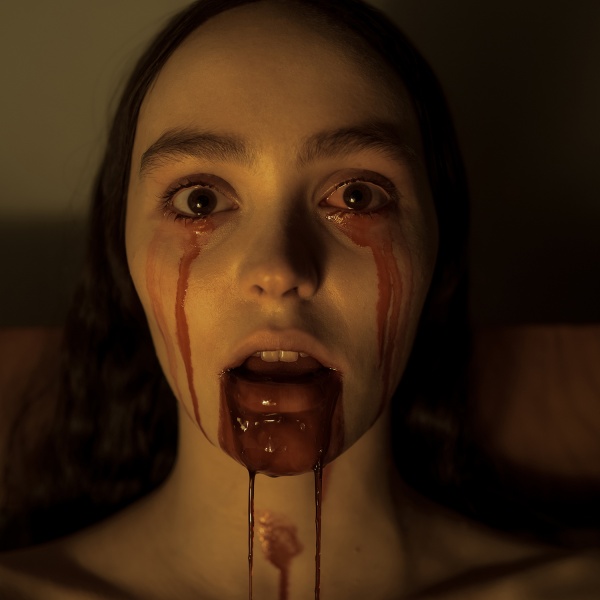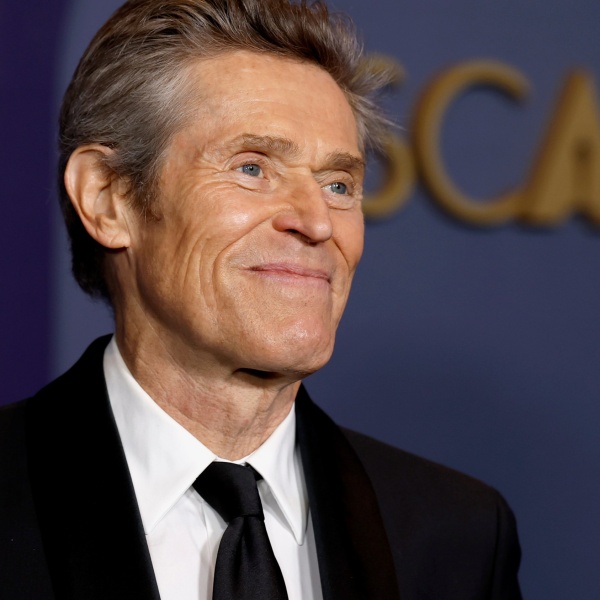Tell me if this sounds familiar: Why are there smudges on the screen? Is the picture supposed to be that dark? Does it sound like one of the speakers is out?
After more than a century, the core of the exhibition business remains unchanged: People go to a building where they buy a ticket to sit in a room with the lights off and watch a movie projected on an oversized screen. Until recently, improvements were analog and incremental. Today, technology creates the potential for near-constant improvement for the moviegoing experience — Lasers! 3-D! Chairs that move!
However, every leap forward also means a prohibitive expense for theater owners who may be already struggling with the status quo.
“Every one of us has to decide, how much capital can we throw at this problem, the problem being modernizing,” Tim Handren, CEO of Santikos Theaters in San Antonio told IndieWire. “You can’t fix it all in one year, so you have to get on a steady diet. The math is identical for all of us. The question is, what becomes a priority? Does it move faster, can I tolerate taking more of my profits and investing it into the future, or do I not have that luxury?”
It’s been 10 years since American movie theaters moved on from 35mm film projectors to digital projection. Not that they had much choice: Studios shifted to digital delivery, which eliminated many of their exhibition costs like printing, cutting, and shipping film prints. For theaters, it meant spending as much as $150,000 to install some of the earliest digital projectors.
Studios agreed to help amortize the costs with virtual print fees of about $100, paid to the exhibitors each time they opened a movie. Today, those fees have expired and the original digital projectors are out of date or failing outright, servers are crashing, and each service call demands a highly paid IT technician — presuming you can find one at all.
Movie theaters have enough problems. With the box office still in post-pandemic recovery, AMC Theatres currently holds just under $5 billion in debt. Regal Cinemas’ parent company Cineworld is in Chapter 11 bankruptcy proceedings and closing 39 locations nationwide.
All of this introduces the last thing theaters need, which is an existential question: If the picture and sound quality that a movie theater promises isn’t there, why should the audience show up?
“Sound and projection is one of those things that people take for granted,” Handren said. “They just assume it’s going to be great when they go, and if it’s not, they talk about it. But if it is great — great, you met expectations.”
A 35mm film projector was a machine with a handful of parts. If one broke, theaters could be back up within a matter of hours. Today, a repair call demands an expert in the latest technology. Some exhibitors can afford in-house support, but it’s more common to draw from a pool of contractors in high demand. Worst-case scenario, that can mean days or weeks of a screen being down.
“It becomes a feast or famine when you get hit with these big numbers,” said Brian Schultz, founder of LOOK Cinemas. “It’s a big deal when a projector goes down. It could be an $80,000-$90,000 investment, and that’s not including sound.”

Exhibitors must choose between upgrading to costly laser projectors, installing premium large-format (PLF) screens, continually performing maintenance on aging machines — or, sacrificing quality altogether. The stuff that goes into making a movie look good is more expensive than most moviegoers can possibly imagine.
“We all know that’s why popcorn and soda costs what it costs at a movie theater,” said Jeff Benson, founder of Cinergy Dine-In Cinemas. “You can’t make it on just the tickets. The cost to build that place and staff it is high. We’re not out there getting filthy rich; we’re just trying to make an honest living, and it’s not an easy business. The average customer has no idea what it costs to put together a movie theater. Their two hours sitting there in a recliner watching that awesome projection, they’re covering a little bit of the cost of that multi hundred-thousand dollar auditorium.”
Theater owners know that if they can’t offer the experience of great picture, sound, and seating, it’s a tough sell.
“I don’t think you can compete effectively if you don’t have all those dimensions,” Schultz said. “I’m seeing exhibitors do everything they can to be competitive. There’s a thirst for folks to come back. We really have one chance to make a great impression as people are coming back to the movies, and I still have a large percentage that hasn’t been back since Covid, so the presentation has to be great.”
Not every theater has the cash for upgrades and maintenance. That’s especially true for exhibitors at larger circuits where the costs are multiplied by hundreds or thousands of screens.

“For Adam Aron and AMC, he’s got over 7,000 screens in that whole network, so he’s got that problem times 7,000,” Handren said. “I’ve got 129 screens, so I’ve got that problem times 129. The math is the same, no matter how you look at it. It’s a problem for the big guys.”
Joe Masher, CEO of Bow Tie Cinemas, said he has two screens with broken projectors. Each requires parts that cost $40,000. This particular multiplex has 14 screens; attendance hasn’t been high enough to demand all of them, so Masher said those two theaters remain “mothballed” until the repairs can make financial sense.
“Maintaining a big multiplex is really, really costly, and there’s only so much you can do with ticket and concession pricing,” Masher said. “With the amount of content out right now, eight screens is a really good number. Eight to 10, maybe. Twelve is okay, but anything above that, theaters have a hard time filling seats. It’s really difficult.”
Most screens still run “Gen-1” projectors, with maintenance costs that include replacing Xenon lamps (also referred to as bulbs), repairing technical equipment, and service fees to pay IT talent who do the repairs. However, Sony no longer services the oldest projector models. That leaves theater owners to “cannibalize” older projectors, stripping them for parts to service the rest of the fleet. Masher, who operates a fleet of 3-D projectors manufactured by a company that no longer exists, found a stockpile of parts to use as units begin to fail.
“Before we had done some of our conversions, the maintenance was getting out of balance,” Handren said. “I know a lot of people doing that, just trying to be cost conscious and minimize how much they’re spending.”
Masher, who is also the treasurer of the National Association of Theater Owners, helped break down some of the specific repair costs. These numbers can vary depending on the provider, the size of the screen, and other factors, but they were also verified by multiple other theater owners who spoke with IndieWire anonymously.
Keep in mind that each of these costs apply for each screen in a theater.
Media block: $7,000-$40,000
This helps convert the digital cinema package provided by a studio into data that can be projected with picture and sound. On average, these range from $7,000 to $14,000. On a higher-end Sony machine (which Sony calls an Optical Block) it can be as high as $40,000.
Digital library server: $12,000-$27,000
These provide storage to hold multiple movies. Some theaters need less storage; others must maintain a larger library of content that lets them host private events or host multiple movies in a different auditorium. Replacing or repairing a server ranges from $12,000 to about $27,000 (on average, $15,000), and it can be more or less depending on if you have an integrated system that can connect throughout all your cinema’s screens. (A movie delivered via hard drive rather than through the cloud is $40 each in shipping costs.)
Xenon bulbs: $450-$1,300
Replacing the bulb that lights a projector is a standard maintenance cost, but they’re also very expensive: A typical 2,000-watt bulb that lasts about 2,000 hours can range from anywhere between $450 to as high as $2,000 for the biggest PLF screens. Brighter, 4,000-watt bulbs, which are used with some PLF screens, might last only 400-500 hours and cost $1,000-$1,300 per bulb. They’re expensive and don’t have a long life. (They use so much energy that projectors also need an exhaust system to cool the light bulb.) As a penny-pinching measure, some theater owners let bulbs run beyond their expiration date. Or, they adjust the power to achieve different lumen levels and create dimmer images.
Screens: $3,000-$50,000
Replacing your screen could be as low as $3,000 if you’re talking an average, 30-foot wide, matte white screen, but it costs as much as $12,000 for a silver screen, which are more common on PLFs and produce a brighter image. The upfront cost of installing an entirely new screen rather than just replacing one can reach up to $40,000-$50,000 for the largest PLF screens.
3-D Projection: $13,000
Thanks to “Avatar: The Way of Water,” it could make another comeback. RealD, the main provider of 3-D tech, will provide maintenance and installation as a service in exchange for a small fee from each ticket sold. But if you pay for the equipment yourself to avoid sharing revenue, an installation of a 3-D system is about $13,000, mostly for the hardware that goes on the projector itself in order to filter the image.

Laser projectors: $40,000-$150,000+
Many theater chains used the pandemic to upgrade to laser projectors and others are upgrading now. All AMC theaters in Los Angeles facilities were converted last October; the exhibitor targets 2026 for all screens to receive laser upgrades. These machines have more vibrancy, more colors, don’t demand Xenon bulbs or the means to cool them, and they use as much as 70 percent less electricity. Most laser projectors can last for 100,000 hours or 10-15 years, and a 700-watt laser has the equivalent of a 6,000-watt Xenon bulb.
The catch, of course, is the cost. According to theater owners, a new laser projector can cost roughly $40,000 for a standard screen, up to $100,000 for a PLF screen, or $150,000 when combining the cost of the projector and lens. Theaters can also lease a projector for anywhere from $700-$1,200 a month, but that may not make sense if an individual screen doesn’t generate that amount in profits.
Laser projectors can also mean other significant costs. The projection booth needs to be outside eye level for safety reasons, which means theaters may have to remove seats and fewer tickets to sell. Most theaters may only deal with a seat or two that needs to be removed, but Handren found he had to sacrifice far more.
“It was a pause, stop, think it through, make sure I’m not going to make a bad decision,” he said. “I can tell you of a number of times when we went through the analysis and figured out ‘Oh my gosh, we’re going to have to take out a dozen or so seats. There’s only 50 seats to begin with. Wait a minute, we can’t do that.’ It’s not just take one device out and stick another one in. And frankly, the public doesn’t care about that. They want to come in and want to be entertained.”
Cinionic, owned by projector provider Barco, has the biggest market share of laser tech around the world. Cinionic CEO Wim Buyens told IndieWire that the company is in conversation with the world’s top 100 exhibitors, with 3,000 laser projectors installed between the roughly 39,000 screens in the U.S. Cinionic also has long-term deals with Regal and Cinemark.
Buyens would not comment on costs, but said his company must convince theater owners that better tech drives more attendance. He said theaters can see a return on investment within two to four years, and those installing full new laser projectors may see a lifetime ROI within five to seven years.
Dolby Sound: $75,000-$100,000
There’s also the factor of the top of the line Dolby Atmos sound systems. Dolby costs depend on many factors, including the size of the auditorium and the number of speakers required, but one theater owner said his bill for the equipment and install of the system on a PLF screen hit $100,000.
Laser projection and standard sound in a new auditorium: $200,000-$375,000
One theater owner, who built new, laser-projector auditoriums with standard sound from scratch, said they prefer to look at the costs on a total screen basis. For a standard screen, it amounted to a one-time equipment cost of $200,000 per screen. For a PLF screen, the average is as much as $375,000. (Building and furnishing the room, and installing seats, not included.)
PLF theater experiences accounted for a 14 percent share of the North American box office in 2022 according to a recent study from The Cinema Foundation, the nonprofit arm of NATO. The same study said that 39 percent of theater owners (about 20,000 screens across North America) plan to install more PLF screens in the next three years. More than half each plan on upgrading sound and projection equipment in their auditoriums in the same span; 42 percent plan to add recliners.
Exhibitors’ trade orgs aren’t paying for these upgrades, but they urge members “to invest in their specific consumers,” TCF president Jackie Brenneman said in a press conference at CinemaCon. “They know their consumers best, and what a consumer in one market might crave, it might be different than what a consumer in another market craves. If an exhibitor has a certain amount of [money] at their disposal, where should they put that money? It depends, but let’s really be curious together.”
A studio distributor who spoke on condition of anonymity said exhibitors run into trouble when they don’t have the funds to consistently maintain and update every year. Sometimes, it takes less money to fund attractions inside theaters that have nothing to do with moviegoing. At Cinergy, Benson offers not just theaters but also laser tag, escape rooms, and axe throwing.

You may also have heard of motion seat technology 4DX or the wraparound picture known as ScreenX, both of which are offered by 4DPlex, a division of Korean giant CJ. The two formats combined brought in over $100 million of the box office for “Avatar: The Way of Water” last year. Don Savant, the company’s Americas CEO and president, said as many as 1,100 screens worldwide have either 4DX or ScreenX.
“We’re getting traction with our audience,” he said. “It’s not something that’s just a gimmick and they see it one time. The biggest pain point is how to drive people out of the home. That’s all we’re talking about in the industry is how we’re driving people into cinemas, because once people get into a cinema, they usually have a pretty good time.”
Still, theaters can’t neglect the basics and that’s often what suffers the most. In a panel discussion at CinemaCon, “Scream VI” producer William Sherak said calling a PLF a “premium” experience is problematic: Filmmakers who agonize over getting every detail perfect shouldn’t see quality experiences reserved for something that’s considered a premium.
“Every screen should hit the baseline of the experience I’m delivering it in,” he said. “I’ve spent months and millions of dollars, and to walk into a theater where three speakers are out and the lighting is off… the reality is, my 4K television offers that.
“To me, that’s a challenge that we have to overcome,” he said. “We spend so much time talking about PLF that we stopped expecting that level of perfection.”






